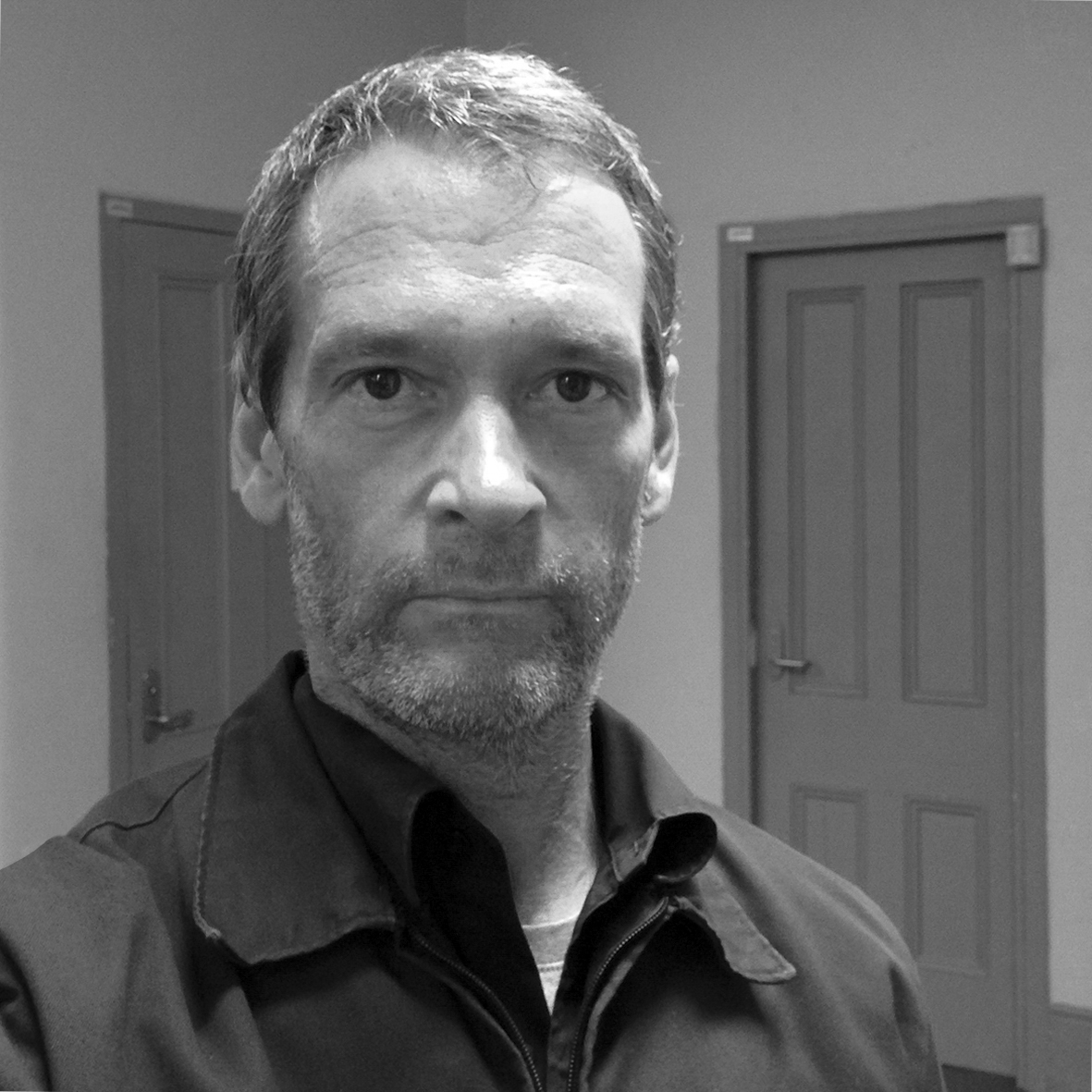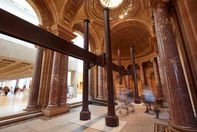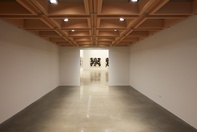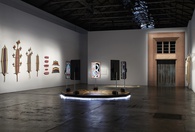Alex Gawronski
Sydney
2017

Alex Gawronski
Born 1968, Sydney. Lives and works Sydney
Alex Gawronski’s practice incorporates installation, photography, painting, video and text. Much of Gawronski’s art consists of architectural installations that focus on the institutional dynamics underwriting and determining how we see and consume art. Gawronski frequently uses galleries and museums to construct narrative fictions that problematise simple assumptions about the supposed neutrality of institutional spaces. These installations allude, often obliquely and poetically, to the economic, socio-political and historical contexts that define these spaces. His works embrace aspects of the absurd, whereby an uncanny intrusion, usually in the form of a built structure, is made to appear in an otherwise foreign context.
Artist text
by Shane Haseman
Alex Gawronski’s Ghosts series (2017) involves a series of 1:1 scale reconstructions of architectural structures specific to three Sydney art institutions. Together, these reconstructions form a type of feedback loop, where a fragment of an architectural feature from one site is used to create a feature at the next. The industrial iron columns of contemporary multi-arts centre Carriageworks are reconstructed in the neoclassical Vestibule of the Art Gallery of New South Wales (AGNSW). The AGNSW’s later foyer extension – specifically its late-modernist gridded ceiling – is rebuilt in the new Museum of Contemporary Art Australia (MCA). Fulfilling the loop, the MCA’s art deco-styled entrance is re-erected within Bay 21 in the Carriageworks precinct. (1)
In Ghosts Gawronski doesn’t exhibit ‘artworks’, per se; rather, he exhibits the museum or gallery itself. This gesture is in keeping with his practice over the last two decades, which has reflected critically on the relationship between art institutions and the works they frame. By making the ‘art’ indissociable from the institution, Gawronski investigates the presumption that art is ever aesthetically autonomous or politically disinterested. Rather, as Ghosts quite literally reminds us, art mirrors institutional structures and so too is inscribed with their values and relations (whether economic, social, historical or cultural). Yet Ghosts seems particularly interested in communicating the manner in which this institutional nexus has become increasingly integrated and homogenised. Despite the apparent differences in the exhibition programs and curatorial rationales of Carriageworks, the AGNSW and the MCA, the organisations are rendered as seamlessly interchangeable in Ghosts. Difference, while it most certainly exists, is replaced with apparent equivalence. This is perhaps illustrative of the paradoxical effect globalism has had on contemporary art. While globalism creates an art of supposed pluralism and diversity, it also creates an art that is integrated in a manner not seen before in history. That it is now possible to speak of an art world – rather than of many – is a development Gawronski asks the viewer to contemplate. Ghosts also makes us aware of the traffic between capital and public exhibitions and collections, and of the tendency for art institutions to recuperate critical expression. This we see in the facade of the MCA becoming a metaphorical ‘open door’ onto a space that once housed a commercial gallery; and in the ‘experimental’ and contemporary art agendas of Carriageworks and the MCA being either integrated into or framed by the more conventional museology of the AGNSW.
Towering over the viewer, the structures of Ghosts are foreboding. The sense is of an institutional nexus that is inescapable, authoritative and impervious to genuine critique (although such spaces frequently house critique). This authority, however, is built on an illusion. It is an illusion that Gawronski reveals through the quality of each structure’s fabrication: while lifelike and to scale, each structure has a decidedly prop-like quality. They are facades and, as such, ‘appearances’ that are open to either unmasking or the viewer’s own imaginative reconceptualisation. It is towards this unmasking and imaginative recombinative play that Gawronski’s institutional critique is ultimately geared.
Notes
(1) Bay 21 formerly housed Anna Schwartz Gallery.



